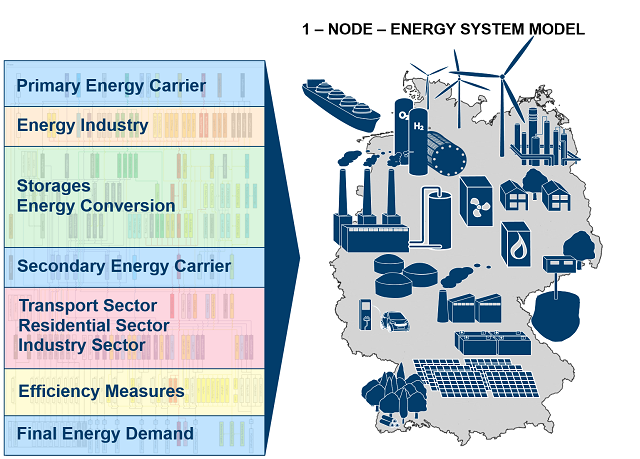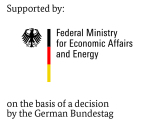Single-Node Model
In order to derive CO2 emissions reduction strategies by analyzing energy system models, these models must describe the energy system and all its sub system extensively.
One way of building an energy system is to assess a given region as a whole and aggregate all of its components and subsystems into one virtual point (node). This node stands representative for the whole region. Such an energy system model is called a single-node model.
In these models, all energy sources, power plants and energy demands of that region have virtually no distance relative to each other. In comparison to a multi-node model, that is able to spatially examine individual components of a system, a single-node model cannot describe the transmission of energy within a system. Therefore, transmission costs and other related parameters are not accounted for.
One advantage of a less complex representation of an energy system is the reduced computational time needed to solve modelling, optimizing and simulation problems. Due to this, single-node models can afford to analyze a higher number of subsystems and technology-components in greater detail than multi-node models.
One goal of METIS is to develop a one-node energy system optimization model for Germany that includes all energy sectors and is able to soft-couple with other sector-models via an open interface.
 Figure 1. Included processes in the single-node model.
Figure 1. Included processes in the single-node model.
The model will be implemented with the open-source system modeling framework FINE [1].

